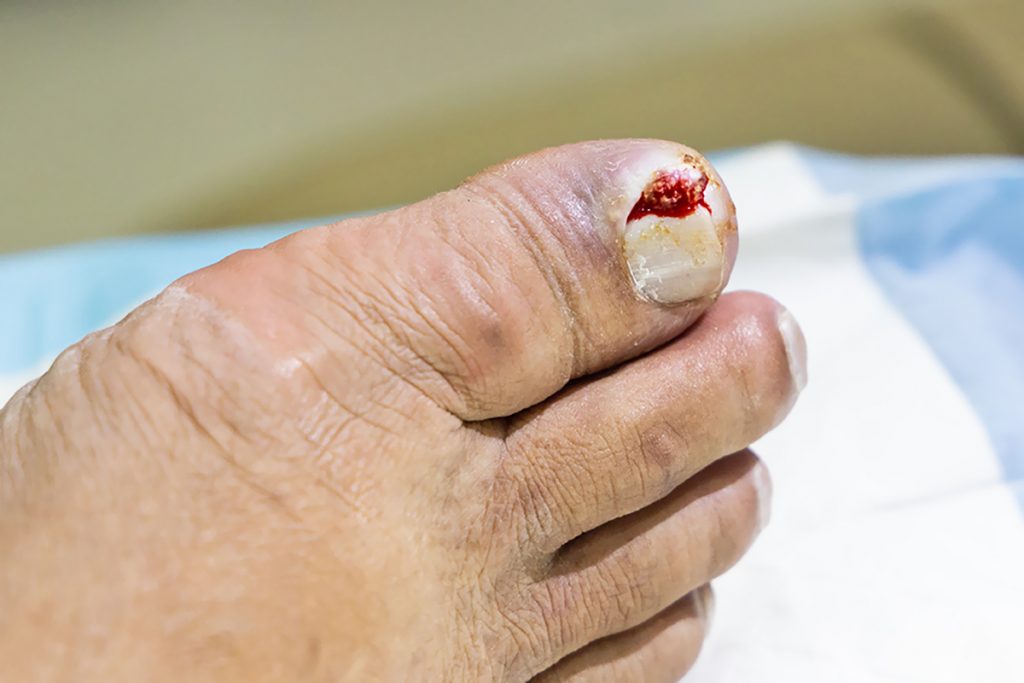Diabetic Foot Problems & Symptoms
Foot problems are common amongst those living with diabetes. And elevated blood sugar can damage blood vessels and the nerves. Therefore, leading to diabetic foot problems. It’s important to take care of your feet.
Also, see Daily Foot Care Tips for Diabetics
Complications with feet are common in diabetes. So, it’s always a good idea to know what signs to look for. If you are a diabetic, you need to watch for changes, such as:
- Skin color changes
- Skin temperature changes
- Pain in the legs
- Foot or ankle swelling
- Corns or calluses
- Open foot sores that are slow to heal
- Ingrown toenails
- Infected toenails
- Dry cracks around the heel
- Unusual foot odor
Should you notice these problems, contact your doctor immediately. Those with diabetes need to be on the lookout for any complications.
Complications from Diabetic Foot Problems
It can be dangerous to ignore these signs. Diabetic foot problems can develop into more severe issues. And if left untreated, you are at risk for additional problems such as:
Infections: a small cut can lead to skin and bone infections. And nerve damage increases the risk of these infections. As a matter of fact, these infections are common in previously treated wounds. Typically they are treated with antibiotics. However, more severe cases need to be treated in the hospital.
Abscess: infections can degrade the bone and tissue. Therefore, creating pockets of pus, called a cyst (or abscess.) And these need to be drained. Some also require bone or tissue removal. Though there are also less invasive options like oxygen therapy.
Gangrene: uncontrolled diabetes damages blood vessels. And disrupted blood flow causes tissues to die, therefore, causing gangrene. Oxygen therapy is used for treatment. Surgical removal of the affected area is also common.
Deformities: nerve damage weakens muscles in your feet. This can cause deformities, such as:
- Hammertoes
- Claw feet
- Pes cavus (high arch that does not flatten)
- Prominent metatarsal heads
Charcot foot: diabetes can weaken bones to the point of breaking. Because of reduced nerve sensation, you may not realize it happened. Walking on broken bones changes your foot shape. The arch will look collapsed when Charcot foot occurs.
Amputation. In specific cases, amputation may be required. Reduced blood flow and nerve sensation create problems. People are not aware of issues until an infection develops. If it is not treated promptly, gangrene can set in. Then, amputation is the best treatment option.
Are you suffering from diabetic foot problems? Call us at 888-409-8006, we can help properly manage your problem so no additional issues arise.

